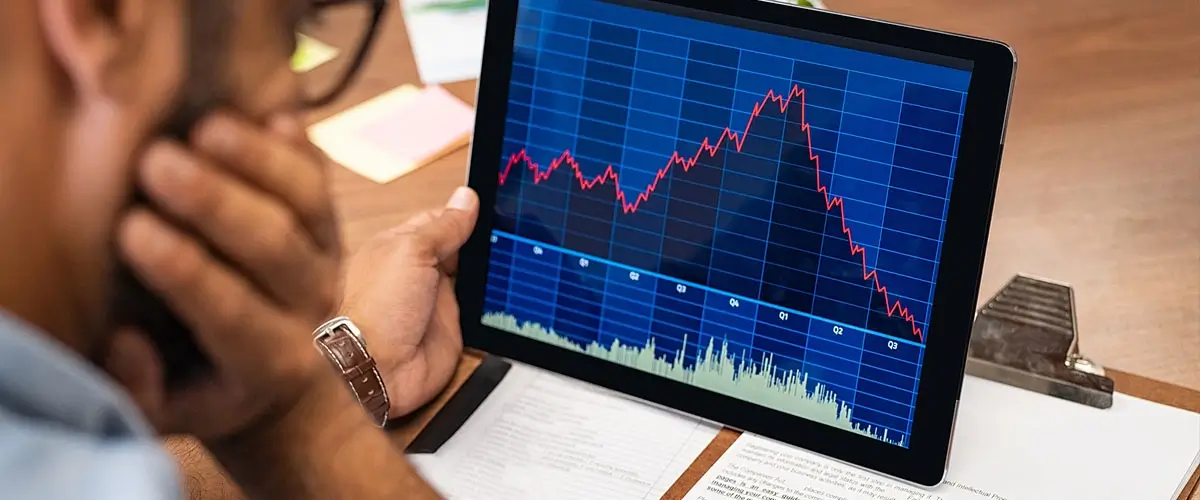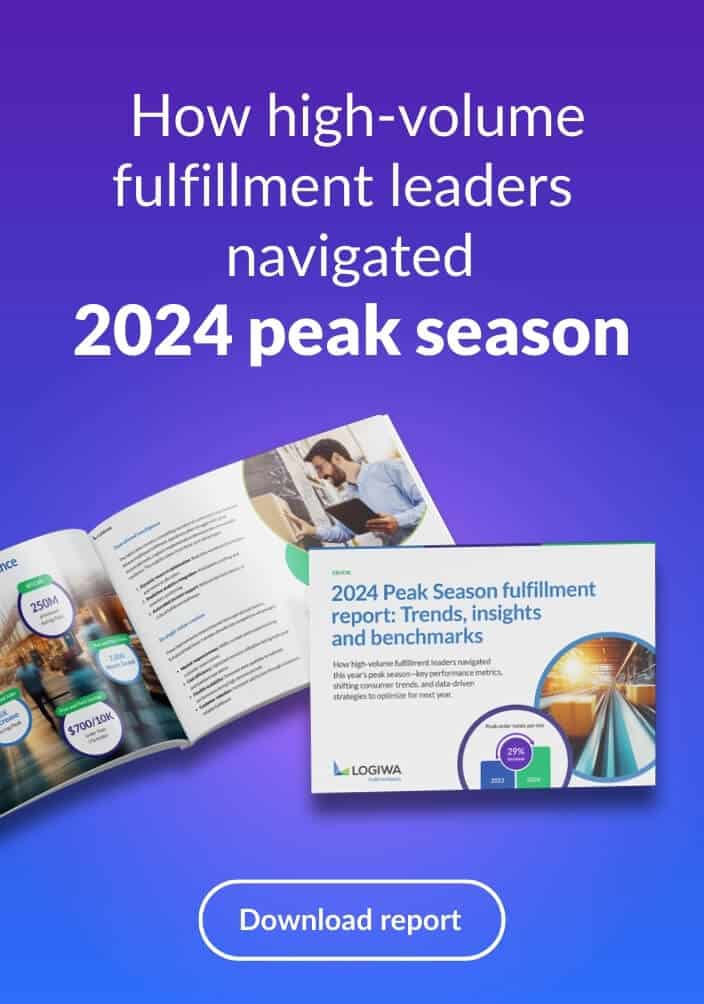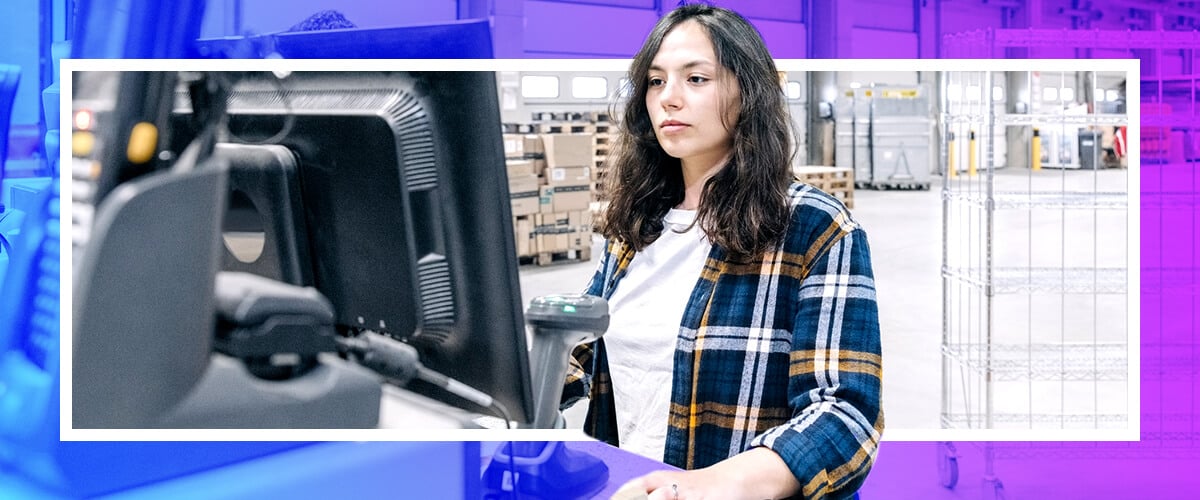Demand Forecasting & Demand Planning for Higher Retail Profit Margins
34% of the top 50 U.S. retailers have reported poor forecasting accuracy. Considering a deviation of 1% in either over-forecasting or under-forecasting can cost a company thousands, or even millions of dollars, you have to wonder why? Only about 60% of the top retailers rate their inventory forecasting software as “good” or “very good”. Demand forecasting is a business function that grows more complex as your supply chain grows in complexity and magnitude.
In this article, you will gain insights into the critical aspects of demand forecasting and planning, and how these strategies can significantly impact the profit margins of retail businesses. From the basics of demand forecasting to the latest tools and technologies, discover how accurate forecasting can positively influence your business decisions and overall success.
Key Takeaways:
- Understanding the Significance of Demand Forecasting
- Importance of sharing information across the supply chain for better visibility
- The crucial role of trust-building among various stakeholders in the process
- Leveraging Retail Forecasting for Operational Efficiency
- Impact of accurate forecasting on warehouse staff management and customer experience
- The consequences of inventory inaccuracies on customer confidence and operational costs
- Exploring Various Demand Forecasting Models
- Qualitative and quantitative approaches for precise demand prediction
- The benefits of leveraging advanced forecasting methods for accurate insights
- Navigating Through Seasonal Trends in Demand Forecasting
- Managing seasonality’s impact on inventory levels and customer demand
- Distinguishing between seasonal trends and broader market shifts
- Harnessing the Power of Demand Forecasting Tools
- Understanding the role of technology in achieving enhanced accuracy and cost savings
- The growing influence of artificial intelligence and data analytics in demand forecasting
- Adopting Best Practices for Effective Retail Forecast and Demand Planning
- A systematic approach for selecting appropriate factors and methods
- Emphasizing the importance of accurate data in achieving precise demand forecasting
Contents
1) What is Demand Forecasting?
“Demand Forecasting refers to the process of predicting the future demand for the firm’s product. In other words, demand forecasting is comprised of a series of steps that involves the anticipation of demand for a product in the future under both controllable and uncontrollable factors.” – BusinessJargons.com
True demand forecasting involves your entire supply chain. Everyone has to share information that increases demand visibility. It’s a tough exercise, but when you can implement it, you have crystal clear numbers for your business in the near and mid-future.
You will likely have to develop trust spanning your entire supply chain, meaning with other organizations. Once you do, operations run smoother for everyone.
BONUS: Before you read further, download our Warehouse Management Software Whitepaper to see how Logiwa uses real-time tracking to help customers get up to 100% inventory accuracy and increase shipments by 2.5x.
Effective demand forecasting and demand planning is actually a part of Integrated Business Planning or Sales, Inventory, Operations Planning. Your inventory accuracy is one of three supply chain KPIs that you’ll use to measure your planning effectiveness.
Your business’ bottom line depends on high forecasting accuracy. Unfortunately, customer demand is incredibly volatile, which can make forecasting difficult.
Besides historical sales data, you’ll need to incorporate:
- Market research
- Consumer research
- Resource and capacity planning
- Stock Replenishment
- Possible economic, political, or social factors
Many businesses struggle to keep accurate historical data, especially when they use an omnichannel sales strategy .
A flexible inventory management system would help you keep the numbers straight, in addition to facilitating daily operations.
2) How Does Retail Forecasting Help You Run a Better Business?
We can tie a variety of problems to poor retail forecasting accuracy. By improving your forecasting accuracy, you’ll be able to make informed retail business decisions. Basically, you’ll run a better retail business because your data will give you a peek into the possible future. Demand forecasting for retail can help you with various areas of your business as they impact the customer experience.
Demand Forecasting Can Help You Manage Your Warehouse Staff Numbers
Demand management and forecasting helps you understand when your peak sales times are. When you anticipate product demand, you can bring in additional staff to handle the increased inventory.
Analysts suggested that the problem didn’t stem from lack of inventory. They said that inventory sat on the warehouse shelves due to low-staffing issues. Walmart had apparently reduced the number of staff in some warehouses in an effort to control costs.
They failed to forecast how that staff reduction would impact their customers’ in-store experience.
When you properly forecast your products’ demand, you can use that information to make operational decisions.
Inventory Accuracy Impacts Your Customer’s Confidence in Your Brand
When your customers look up at the shelves or on their screen and see you’re out-of-stock, it creates a bad customer experience. It doesn’t usually bother customers when you don’t carry a product. However, seeing an empty shelf or out-of-stock alert causes friction in the customer experience.
Walmart customers complained of the same thing. So did Nike’s customers in 2001 when they implemented demand planning software without enough testing. There was a glitch (or a few) with their new $400 million software that caused their supply chain to produce too few Air Jordans and too many Air Garnetts (we’ve never even heard of those).
Nike recovered of course, but that’s not the sort of hit most businesses can take. However, their stock took a hit, and their loyal customers weren’t happy.
You Can Avoid Situations Where You Must Expedite Inventory
Sometimes, expedited deliveries are part of doing business. When they become a regular occurrence, you need to determine why. Some businesses are integrating expedited shipping as part of their business model. However, if that’s not your business model, then you aren’t saving money.
Evaluate your supply chain to identify the failures in your process. If you can avoid the expediting costs, then you’re spending money that can benefit another section of your business. These sorts of costs hurt your bottom line, making your business less profitable.
Besides strengthening your supply chain against weaknesses, you might also consider using a WMS that automatically reorders inventory based on inventory reorder points.
Keep Warehousing Costs Optimal by Holding The Right Amount of Inventory
When you accurately do forecast your retail inventory, you keep your inventory levels right where they need to be. You need enough inventory to satisfy the downstream demand, but overstocking leads to a variety of problems, such as higher carrying costs.
Excess inventory gathers dust and gets in the way of your warehouse employees, impacting their order picking productivity. Your employees may need to clean off old inventory before it can be shipped. This can delay load times for the vehicles at your warehouse, leading to late deliveries and unhappy customers.
In such a highly competitive market, can you afford to have unsatisfied customers?
3) Demand Forecasting Models
The goal of demand forecasting and demand planning is to predict customer demand as accurately as possible to avoid the issues we described above. Retail demand forecasting models are grouped into two categories: qualitative and quantitative. Quantitative methods rely on data, while qualitative methods rely on (usually expert) opinions.
Qualitative Demand Forecasting
Inventory demand forecasting methods are categorized as judgmental and experimental methods. They’re usually used when historical data for your products aren’t available. Like in the case of new products.
A judgmental method often used pulls on the opinions of available experts. You’ll gather subjective assessments from suppliers, marketing, sales, and purchasing professionals. You may also try executive brainstorming, which has the goal of drawing on your executives’ experience to create a collective perspective on future demand.
Delphi studies are an advanced method of quantitative demand forecasting. Each participant will provide their opinion without collaborating with the others to avoid bias. Each person will then review the group opinions, altering their own demand projections until the group reaches a consensus. You’ll have to do multiple rounds in order to reach that conclusion.
Quantitative Demand Forecasting
There are quite a few different qualitative methods, ranging from basic to complex. All of them can be very valuable in developing an accurate forecast.
Causal methods
Causal methods use a number of internal and external factors, such as price, legislation, and even the weather, along with another qualitative method to accurately paint a picture of future inventory requirements.
Don’t Let Your Inventory Become a Liability: Poor inventory accuracy leads to a host of issues that cut into your margins. Learn how Logiwa integrates all your sales channels and provides real-time inventory tracking.
Projective forecasting methods
Projective forecasting methods are based on mathematical formulas, which can provide a more straightforward answer to your inventory forecasting needs. These methods use past data to estimate future demand. Demand forecasting software is often used, so we won’t go into the precise formulas for each type. Moving average, exponential smoothing, and time series analysis are a few examples.
- Moving average forecasting: this method offers the average for all the numbers within a subset of data. If you have product demand data for a span of ten years, you could calculate the moving average for two years, five years, and ten years. Then you can examine the past demand data for trends from different time perspectives.
- Exponential smoothing: an advanced version of moving average forecasting that assigns more value to the most recent data. The further you go back in time, the less weight those data points have.
- Time Series Analysis: The methods that fall into this category differ from causal methods in that they only use the data and no judgement or opinion. This means that they only use historical data, and don’t take into account future events.
Life Cycle Forecasting
Life cycle forecasting can be useful for technology products or any inventory with a high chance of obsolescence. This type of demand forecasting tools accounts for the fact that demand changes throughout the life cycle of a product. Accurately retail forecasting based on the life cycle of your products can help you keep even leaner inventory, and account for future releases of newer versions of your product.
Demand forecasting software usually has the ability to incorporate various forecasting methods to understand what your data is telling you. You need to know overall product trends, annual trends, and seasonal trends, which uses multiple forecasting methods.
4) Forecast and Demand Planning for Trends and Seasonality
When looking at your inventory trends, it’s important to account for seasonality. If you take the number of sales you’ve had across the year and use the average as your inventory level, you’re going to have too much stock some times, and too little stock at other times. Holiday decorations are a great example of this.
Brick-and-mortar and online stores sell a serious amount of Christmas decorations leading up to Christmas. They have sales on decorations at the end of the holiday season to clear all of that inventory out of their stores.
Have you ever seen Christmas decorations on retail shelves in May? The costs associated with carrying that item isn’t worth the price.
Some products aren’t as affected by seasonality, like diapers. Children wear diapers for the first 2-3 years of their lives, and people have babies year round. So demand is fairly steady.
Be sure to review your data to see which products are affected by seasonality and which are more steady. You shouldn’t forecast for diapers and baby wipes the same way you would forecast for holiday decorations.
Isn’t Seasonality a Trend?
Seasonality is a change in demand on a periodic basis. Trends are a change in demand that occur for a variety of reasons, like a shift in consumer behavior. If a product has sold at a steady rate for years, and then demand increases, this is a trend. If you’ve always sold a particular pillow, and then a celebrity posts about how wonderful it is on social media, you may experience a positive trend in sales.
Conversely, if a product gets negative press, like child labor being involved in the manufacturing, you may see a negative trend in sales for that product or even the whole brand.
5) Demand Forecasting Tools
Companies have always tried to get ahead of sales trends. The correlation between accurate forecasting and lower supply chain costs has long been understood. The advances in technology like artificial intelligence and data analytics have made it possible for companies to see accuracy rates like never before.
This doesn’t discount the need for experienced personnel. It’s not a man-versus-technology scenario. It’s a humans-augmented-by-technology scenario.
In an interview for Demand-Planning.com, Dr. Chaman Jain, Editor of the Journal of Business Forecasting said “I found an average company can save $3.52 mil. for every one-percent improvement in the under-forecasting error, and $1.43 mil. in improving the over-forecasting error.”
The amount of savings that he notes here is massive, especially when you consider that for every 1% for either type of error, you’re likely losing much more than that. You have to consider lost sales and lowered credibility as the impacts ripple to your customers or your suppliers.
The potential for supply chain savings outweighs the cost for tools like demand forecasting software. Which means you can’t afford to ignore this supply chain and warehouse tech development. Because ecommerce, wholesale and even 3PL businesses big and small struggle with forecasting accuracy, expect to see investments of all kinds in this tech in the coming months and years. Even 3PLS within their 3PL software offer basic forecasting for their clients.
6) How To Approach Your Retail Forecast and Demand Planning
As you can see, there are a variety of methods that you can use to in retail forecasting and inventory planning. No matter which process you use, you should approach your retail forecasting in a methodical manner. Here’s our recommendation:
- Plan to identify and use the most applicable factors and methods for your business.
- Review the accuracy of your data. Including anomalies and incorrect data will give you less effective results.
- Categorize your products based on key similarities and differences. Different product groups may require different forecasting methods.
- Analyze your results to draw conclusions from your system’s output. Relevant factors like sample size may influence your conclusions.
- Monitor your system and control for quirks in the data. Products go out of style, and new product versions make old versions obsolete.
Unlock a personalized tour of Logiwa IO
Accurate Data is the Key to Unlocking Better Demand Forecasting
Higher forecasting accuracy doesn’t just rely on the methods you use quarterly or annually to plan your inventory. What you and your employees do every day in the warehouse receiving inventory and fulfilling orders matters more. Each day builds on the one before it. If your daily numbers are off, there’s no way to untangle that and efficiently produce accurate forecasting models. Put emphasis on accuracy and precision throughout your entire supply chain, and you’ll capture the advantage of more exact demand forecasting.
Unlock the Potential of Demand Forecasting for Your Retail Business
In conclusion, demand forecasting stands as a crucial linchpin in the world of retail, where accuracy translates into higher profit margins. By adopting effective forecasting models, you can make informed decisions, optimize staff management, bolster customer trust, and maintain the right inventory levels. Embracing advanced tools and technology is essential for staying ahead in the highly competitive market. So, if you’re ready to supercharge your demand forecasting and elevate your retail operations, it’s time to partner with Logiwa WMS, a pioneer in real-time tracking and inventory solutions. Don’t miss out on the opportunity to revolutionize your retail business; take the first step toward success today.
Explore the Power of Logiwa WMS for Enhanced Demand Forecasting
Discover how Logiwa uses cutting-edge technology to provide up to 100% inventory accuracy and boost shipments by 2.5 times. Book a demo with our experts to transform your retail business with our advanced Warehouse Management Software.
Adjust quickly to ever-changing fulfillment requirements with the most flexible WMS
Warehouse Management
Modern digital WMS powers a modern fulfillment experience
Inventory Management
Improve your inventory across your supply chain.





